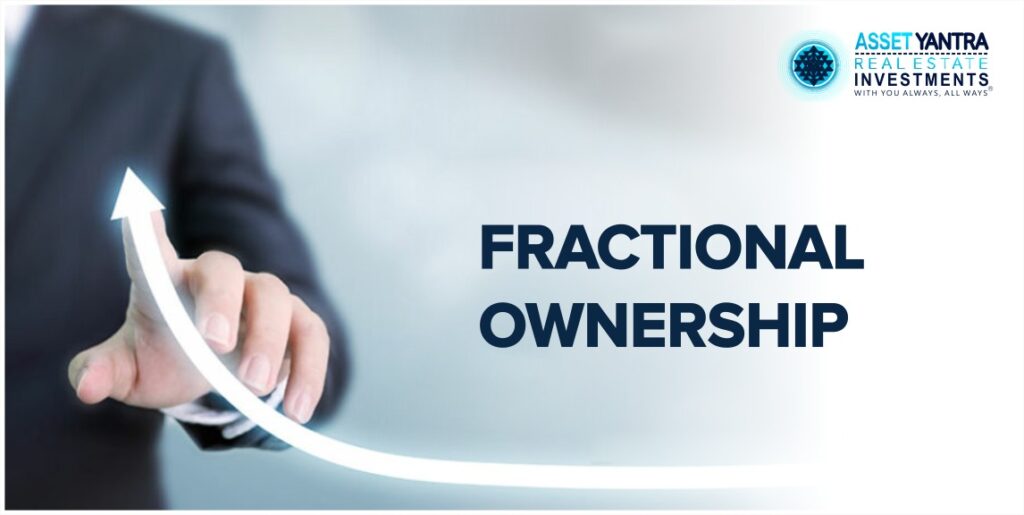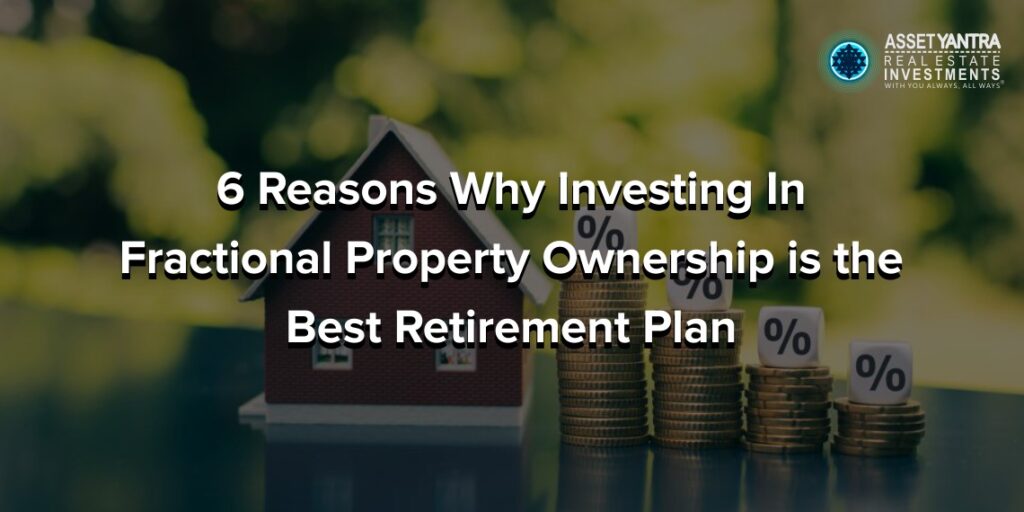The internal rate of return (IRR) on fractional assets ranges from 13 to 20 percent, which is greater than most retirement plans.
While there are numerous passive income sources and retirement corpuses. Investing property is the key. Commercial real estate (CRE) fractional ownership is one such asset class that offers an ideal opportunity when analyzing a long-term and reliable investment. In combination with a sound investment plan, commercial real estate (CRE) can be a reliable asset class. That provides capital security, regular income (often between 10 and 12 percent). And portfolio diversification, all while reducing possible risks. This article will address all your concerns regarding fractional ownership for senior citizen investors.
Understanding Fractional Ownership

In the world of investment, commercial real estate has been a closely guarded secret. In comparison to other solid asset classes, it has provided returns ranging from 8 to 15 percent each year for decades. However, due to the large ticket size, lack of knowledge, data, and transparency. It has only ever been available to HNIs, private equity companies, and family offices.
Fractional ownership divides a single asset into pieces, allowing investors to gain ownership of a piece or more dependent on their investment. It’s up to the investor to determine what type of asset they want to put their money into. Which allows them to craft an investment strategy that fits their risk tolerance. Fractional investment is becoming increasingly popular in the United States and the United Kingdom as a profitable way. For individuals to invest a little portion of their money instead of significant quantities in real estate.
Why is fractional ownership an excellent resort for my retirement corpus?
- Regular Source of Monthly Income:
After retirement, your finances become more of a problem if your regular monthly income quits. As a result, one of the most critical elements of retirement planning is guaranteeing a steady stream of income. That will provides sufficient finances long after you retire. Investing in fractions provides a reliable monthly or quarterly stream of passive income, as well as potential for long-term capital gain.
- Stable Asset Class:
Younger investors may afford to take chances with their assets, but retires must be cautions. Capital appreciation and rental income are 2 ways fractional CRE investments pay off. There are several advantages to investing in commercial real estate (CRE), including consistent profits and regular cash flow.
- Uncomplicated Investments:
It may appear difficult and complicated to include CRE in your investment portfolio because of the complexities involved. But owing to new-age tech players who provide an easy-to-use one window platform, investing in real estate across the country has been easier. Data-driven selection, strict financial and legal due diligence, and thorough selection criteria ae used to eliminate all asset-related risks besides paperwork and site visits.
- Security of Capital:
Property has long been regarded as one of the safest forms of investment sue to its tangible, physical aspect. As a result, it’s worth is directly tied to the building’s ongoing operations. Its value does not fluctuate according to the performance of the market like equities or mutual funds do.
- Goldilocks asset:
Fractional property is organized such that it’s neither prohibitively expensive (like buying a house by yourself) nor limitingly small, like the Senior Citizens Savings Schemes (SCSS), which cap investments at 15 lakh. The fractional property allows investors to pick and choose how much they wish to invest up to Rs.25 Lakh.
- Liquidity alternatives and smooth operations:
With fractional ownership, it’s easy to move between different assets. In addition to the benefit of entering CRE investment at a lower investment bracket, investors are not troubled by any overheads. Exiting the building is just as simple and quick.
How much money should retirees put into fractional ownership?
Fractional Ownership is considered a low-risk, high-return investment by industry professionals who believe it should be included in everyone’s retirement portfolio. Seniors can put up to 25% of their retirement funds into fractional ownership, which can provide a consistent stream of rental income while also increasing their wealth. The balance, according to experts, can be placed in secure vehicles such as debt mutual funds, money market funds, and government-backed savings plans. According to experts, investors that prefer fractional ownership should only invest in pre-leased Grade A assets to protect their capital.
Conclusion
There is a lot of uncertainty in retirement planning because of the pandemic, and investors have had to rethink their investment possibilities as a result. If investors want to reach their financial goals in the post-Covid world, they’ll have to think hard about how to deal with financial shocks. CRE is a billion dollar business in India, and it’s only going to keep growing. The developing formal economy, as well as high-end commercial buildings, make it an attractive place to invest, allowing you to achieve your financial goals over the long term. Fractional ownership and crowdfunding investors can find high-quality A-grade investment options with Asset Yantra & GAK Group India’s fastest-growing real estate platform. We guarantee great liquidity, transparency, and an IRR between 14 and 21 percent. Comer visit us and start your investment!
6 Reasons Why Investing In Fractional Property Ownership is the Best Retirement Plan FAQs
Fractional ownership is one of the finest investment options for senior citizens because of the monthly rental income, capital security, hassle-free investment, and lower capital needs.
Up to 25% of retirement assets can be invested in fractional ownership, resulting in a constant stream of rental income and capital gains. The rest of the money can be put into secure products like debt mutual funds, FDs, and government – backed savings plans according to experts.

